Archaeological Parks in Cusco
Cusco was the center of the Inca culture. There it is possible to find many of the most important Inca archeological centers. There are also archaeological remains of pre-Inca cultures. Some of the most important are: Sacsayhuaman, Chinchero, Ollantaytambo, Pisac, Choquequirao and, of course, Machu Picchu.
- Historic sanctuary of Machu Picchu
- Sacsayhuaman Archaeological Park
- Archaeological site of Coricancha
- Archaeological site of Ollantaytambo
- Pisac Archeological Park
- Archaeological Park of Choquequirao
- Moray archeological site
- Tipón Archaeological Park
- Archaeological Center of Chinchero
- Raqchi Archaeological Park
- Archaeological Complex of Piquillacta
Cusco was the capital of the Inca empire and, consequently, a sacred place where the most important cities and temples were built. To visit its archeological sites you can get the Cusco Tourist Ticket. The entrance ticket to Machu Picchu is purchased directly online.
Historic sanctuary of Machu Picchu
- The Inca city of Machupicchu is located 110 kilometers from the city of Cusco. You arrive there by a train trip that crosses the Sacred Valley of the Incas.
- The Historic Sanctuary of Machupicchu covers an area of approximately 38,448 hectares. There live many species of plants, birds and animals. In addition to the Inca city, there are other archaeological sites.
- The role that the Inca city of Machupicchu had is not yet clear. Some consider it was a mausoleum built by the Inca Pachacutec. Others that was a center for resource management or that was a political and religious center.
- The archaeological site has more than 150 structures between temples, enclosures and tombs. They emphasize the Temple of the Sun, the Temple of the Moon, the Intihuatana, the Intipunku, the Inca Bridge, the Sacred Rock , among others.
How to visit it? – With the Machu Picchu ticket or Machu Picchu tickets that include mountains.
How much? – 50 dollars per ticket, approximately (varies according to the type of ticket).
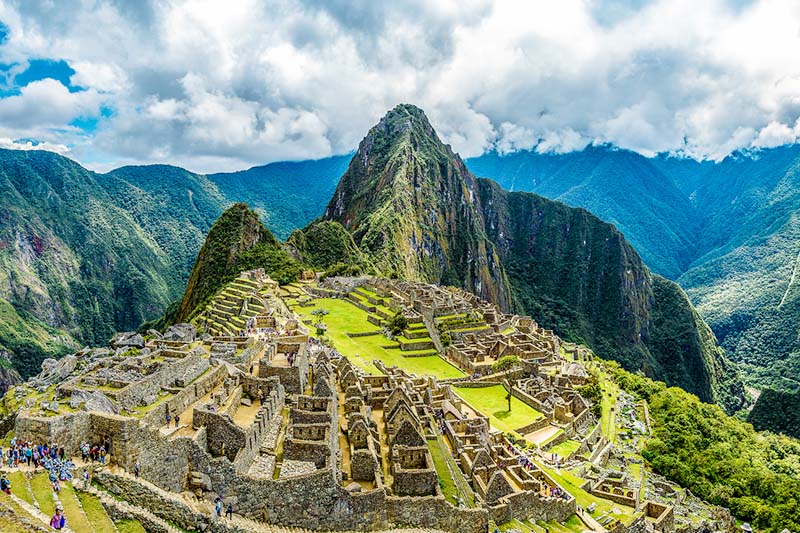
The historic Sanctuary of Machu Picchu is one of the most visited places in Cusco
Sacsayhuaman Archaeological Park
- The archaeological park of Sacsayhuaman is one of the most recognized in Cusco. It is located just 6 kilometers from the city. It covers an area of approximately 3,093 hectares where the archaeological site of Sacsayhuaman as well as Qenqo, Puca Pucara, Tambomachay and other smaller Inca precincts are located.
- The fortress of Sacsayhuaman may have been a pre-Inca construction that was remodeled under the Pachacutec Inca government. It is famous for its immense walls with carved rocks of up to 125 tons. Even today it is difficult to explain how the Incas did to move these rocks.
- The form of Sacsayhuaman indicates that it had a military function. There were clashes between the Spanish invaders and the rebel Incas.
- Recent findings and research suggest that Sacsayhuaman also had a religious and astronomical function.
How to visit it? – With the Cusco Tourist Ticket.
How much? – $ 21 per ticket approximately.

Gigantic structures that can be found in Sacsayhuaman
Archaeological site of Coricancha
- The Coricancha was the main Inca religious temple. It was dedicated to the sun and other deities such as the moon, the stars and the mountains. It is located in the heart of the city of Cusco, the capital of the Inca empire.
- Coricancha is a Quechua word that means ‘Gold enclosure’. This is because during the incanato many of its enclosures were covered with sheets of gold and silver. After the conquest, the temple was sacked and on its base the Spaniards built the church of Santo Domingo.
- The walls of Coricancha are the best work on stone that the Incas did. Despite the earthquakes that hit the site in 1650, 1749 and 1950, the archeological site remains untouched. Instead, the church of Santo Domingo did suffer severe damage.
- Currently next to the Coricancha are the Temple of Santo Domingo and the site museum with the objects found in the place.
How to visit it? – Buying the entrance ticket at the same door of the place.
How much? – 5 dollars per ticket approximately.
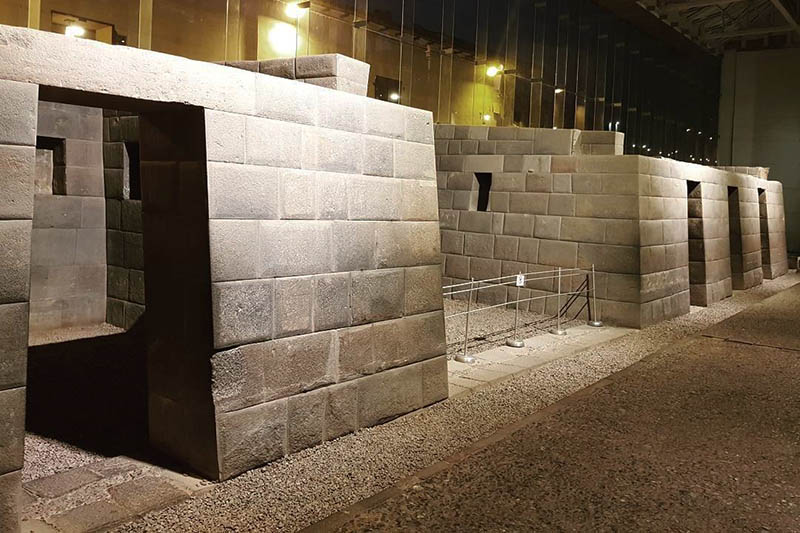
Temple of the Sun Qoricancha
Archaeological site of Ollantaytambo
- The archaeological site of Ollantaytambo is located in the Sacred Valley of the Incas (in the town of the same name). It was one of the main religious temples and Inca fortresses. It covers an area of approximately 34,800 hectares.
- The archaeological remains of Ollantaytambo have a well-maintained architecture. Proof of this are its beautiful platforms as well as its structures such as the Temple of the Sun, the Royal House of the Sun, the Bath of the Ñusta, the Monumental Cover, among others.
- The chronicles indicate that Ollantaytambo was built in the fifteenth century by orders of the Inca Pachacutec. In 1537 there they fought the Spanish invaders and the Inca rebels destroying much of the enclosure.
- The town of Ollantaytambo is the only one in Peru that maintains its original Inca urban planning organization. Both the archaeological site and the town are very popular tourist attractions of Cusco.
How to visit it? – Buying the Tourist Ticket of Cusco.
How much? – $ 21 per ticket approximately.
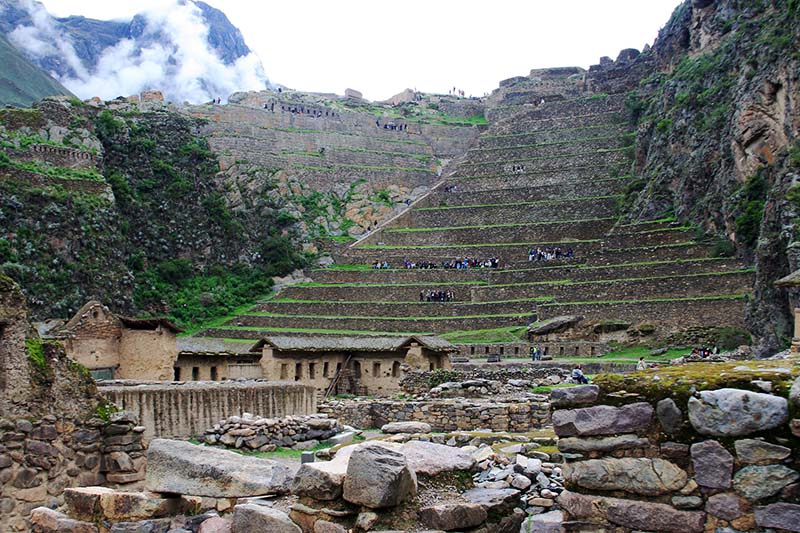
View of the Archaeological Park of Ollantaytambo
Pisac Archeological Park
- The archaeological site of Pisac is one of the most popular destinations of the Sacred Valley of the Incas. It comprises an area of 9,063 hectares. It is located just 30 kilometers from the city of Cusco.
- It is believed that Pisac was a royal estate. Its name comes from a Quechua word that means ‘Partridge’, a bird that abounds in the area. From the top you can see that the archeological site is shaped like this bird.
- In the main enclosure of the park there are several sectors such as the main neighborhood or that of Intihuatana where temples and palaces like the Intihuatana, the towers, a temple of the Sun and many others are housed.
- Pisac was a city and religious temple of great importance in the incanato. The town at the foot of the archeological site preserves many of the ancient traditions. Every Sunday there is a very popular trade fair where grocery products are offered as well as all kinds of crafts.
How to visit it? – Buying the Tourist Ticket of Cusco.
How much? – $ 21 per ticket approximately.
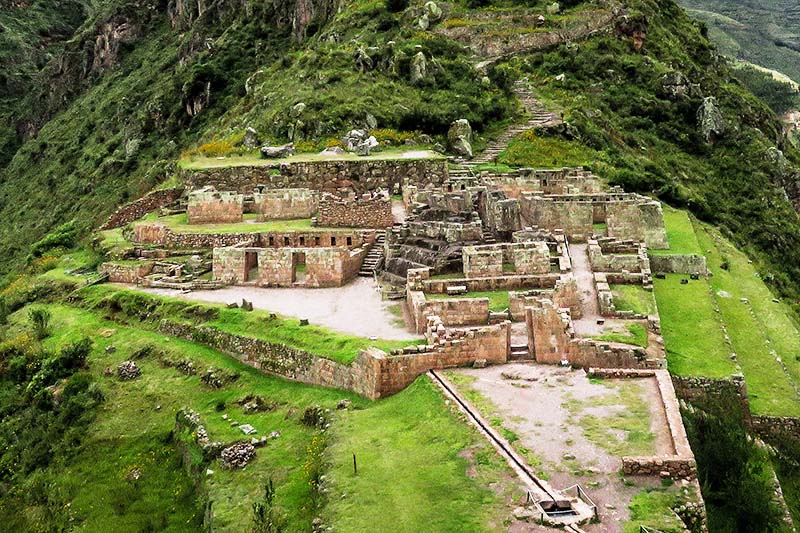
Constructions of the ancient Inca city of Pisac
Archaeological Park of Choquequirao
- Choquequirao is located on the right bank of the Apurimac River near the Salkantay mountain range, in the district of Santa Teresa in the province of the Convention in Cusco. It covers an area of approximately 1,810 hectares.
- Choquequirao is a large archaeological complex with typical Inca buildings and a magnificent platform of andenería. By its similarity it was considered ‘The sacred sister of Machu Picchu’.
- This complex is in the process of excavation. Only 30% of the archaeological park was excavated and put to value the tourist. To get there you must make a 2-day walk (there are no buses or tourist trains).
- Currently you can make the tour with tour packages. However, you may also do it on your own. To enter Choquequirao you must pay an entrance fee at the same door.
How to visit it? – Through a tour or paying the ticket at the same door.
How much? – The tour costs $ 500 per person, approximately.
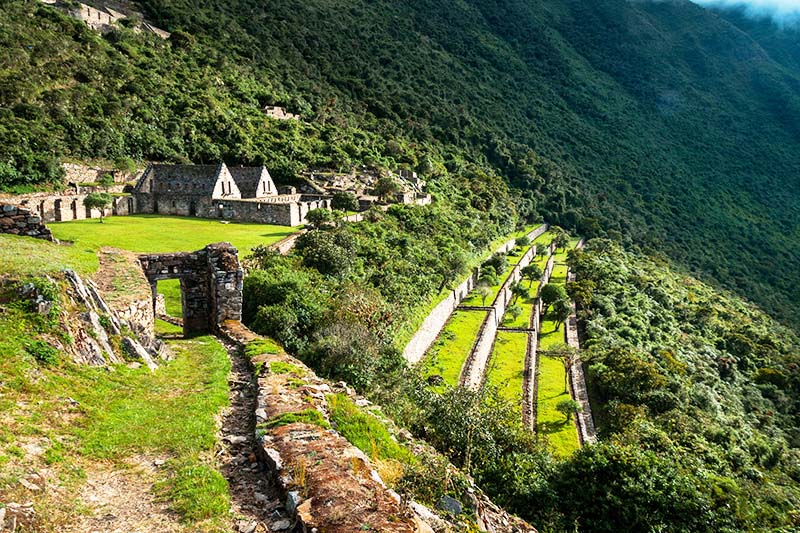
Choquequirao archeological complex
Moray archeological site
- The archaeological site of Moray is located in the province of Urubamba, district of Maras in the Sacred Valley of the Incas. It has an area of 37.50 hectares.
- Moray is a system of several large concentric circular terraces. Its function was that of agricultural research center.
- The arrangement of the platforms generates a variety of microclimates. A warmer temperature is reached in the deepest center of Moray, which increases as it moves outside. In total, Moray is estimated to house up to 20 different microclimates.
- During the time of the Incas, Moray produced a great variety of vegetables and potatoes. Likewise, it allowed to domesticate other plant species that could not be cultivated in the surrounding areas.
- Today the archaeological site of Moray is one of the tourist attractions most photographed by tourists visiting the Sacred Valley of the Incas.
How to visit it? – Buying the Tourist Ticket of Cusco.
How much? – $ 21 per ticket approximately.
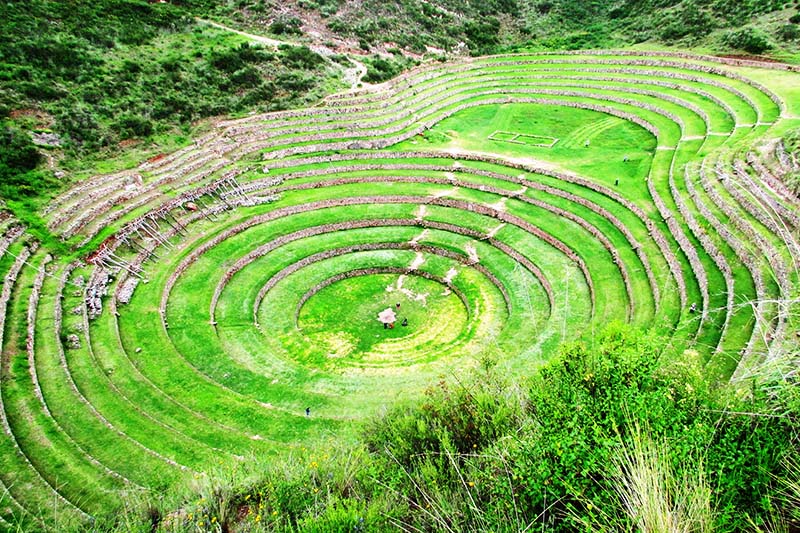
Agricultural research terraces found in Moray
Tipón Archaeological Park
- The archaeological park of Tipón is a settlement that is located near the district of Oropesa, 25 kilometers from the city of Cusco. It is part of the tourist circuit of the South Valley. It has an area of 239 hectares.
- Tipón is built by a system of aqueducts, ceremonial fountains, agricultural terraces and various enclosures. This place served as a resting place for the Inca and his family. According to the chronicler Garcilaso de la Vega, the Inca Huiracocha ordered the construction of a residence for his father Yawar Wakaq to serve as a refuge.
- Tipón is one of the best preserved Inca archeological sites. It is considered a ‘masterpiece of hydraulic engineering’. Also, from its viewpoints you can see the city of Cusco and its surroundings.
How to visit it? – Buying the Tourist Ticket of Cusco.
How much? – $ 21 per ticket approximately.
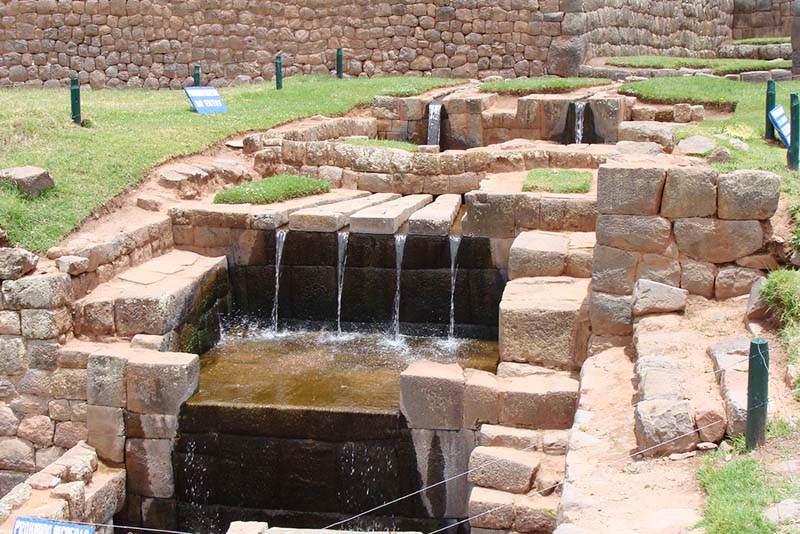
Aqueduct systems found in the Archaeological Park of Tipón
Archaeological Center of Chinchero
- Chinchero is located in the highest part of the Sacred Valley of the Incas. It reaches an area of approximately 43 hectares. It is believed that it was initially occupied by the ethnicity before the Incas called Killke.
- During the heyday of the Inca empire it was the residence of the Inca Tupac Yupanqui who planned the construction of the Inca palaces of the place. The enclosure was formed by trapezoidal niches, stairways, walls and platforms. However, after the Spanish invasion, the place was almost completely destroyed. In the place they built the church of Our Lady of Monserrat.
- The town of Chinchero is famous for preserving many of its ancient traditions such as clothing and lifestyle. There are several textile centers where you can learn the spinning techniques of the villagers.
How to visit it? – Buying the Tourist Ticket of Cusco.
How much? – $ 21 per ticket approximately.
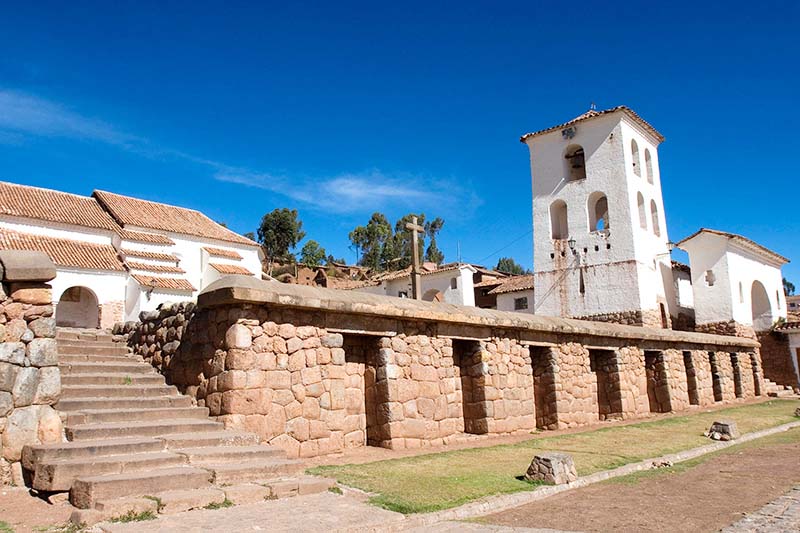
Colonial church built on what were Inca palaces located in the center of the main square
Raqchi Archaeological Park
- Raqchi is located in the district of San Pedro, in the province of Canchis in the South Valley of Cusco. It is 118 kilometers away from the city of Cusco. It covers an area of approximately 1,097 hectares.
- Among the various structures that were built there stands out the Temple in honor of the god Wiracocha, according to the Andean worldview this god was the creator of the universe.
- Raqchi is closely related to the Kinsachata volcano, which is considered an important huaca on whose slopes were tombs, chullpas and walls.
- Part of the archaeological park of Raqchi also covers a part of the extensive network of Inca roads known as the ‘Qhapac ñan’, which reached part of the current countries of Ecuador, Colombia, Chile, Bolivia and Argentina.
How to visit it? – Hiring a tour to the South Valley of Cusco or buying the ticket at the same entrance door.
How much? – The tour costs approximately $ 30 per person.
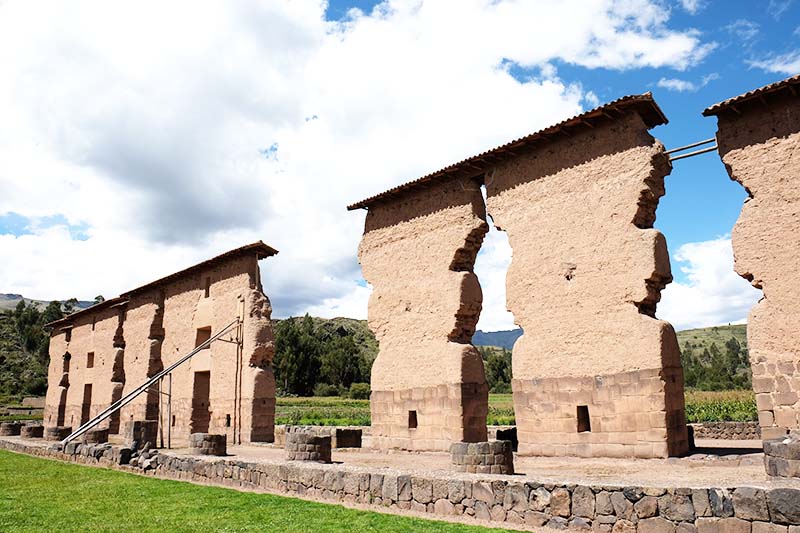
Remains of the Temple of the god Wiracocha
Archaeological Complex of Piquillacta
- This archaeological park is located in the province of Quispicanchis, near the districts of Oropesa and Lucre. From Cusco city you must travel approximately 47 kilometers by road. The place covers an area of 50 hectares.
- Piquillacta was a Wari city (pre-Inca culture) that was built around the 6th century. It is believed that it was abandoned in the ninth century, before the Inca expansion. It is also part of the tourist circuit of the South Valley of Cusco (along with Tipón and Raqchi).
- The urban design of Piquillacta presents a layout of harmonious streets and squares. Their constructions were made with mud and mortar. It is estimated that there were more than 700 buildings between homes, colcas (warehouses) and temples.
- Piquillacta had to house about 10 thousand people. Among the most prominent structures are the Qaranqayniyuj settlement, the Choquepucjio buildings and the most important structure of the Urpicancha complex, a set of extraordinary platforms of great architectural beauty.
How to visit it? – Buying the Tourist Ticket of Cusco.
How much? – $ 21 per ticket approximately.
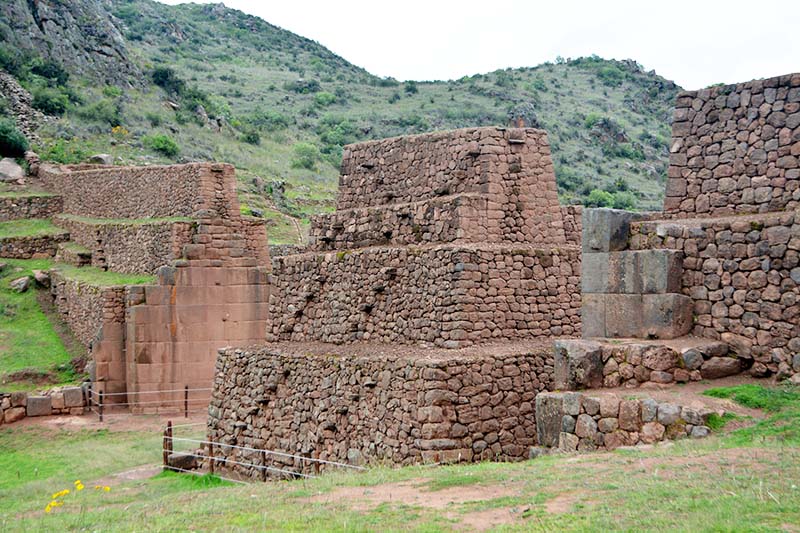
Pikillaqta Platforms
Advice from people who have been there
 By: Mirco D
By: Mirco D“Incredible places“
“All the places we visited in the Sacred Valley of the Incas were beautiful, to see those incredible moles of stone so finely joined leave you amazed. Needless to say about Machu Picchu, it is simply wonderful, I will never forget this trip, and I get the impression that the Incas were of the greatest cultures of humanity.“
By Ticket Machu Picchu – Last updated, August 15, 2024